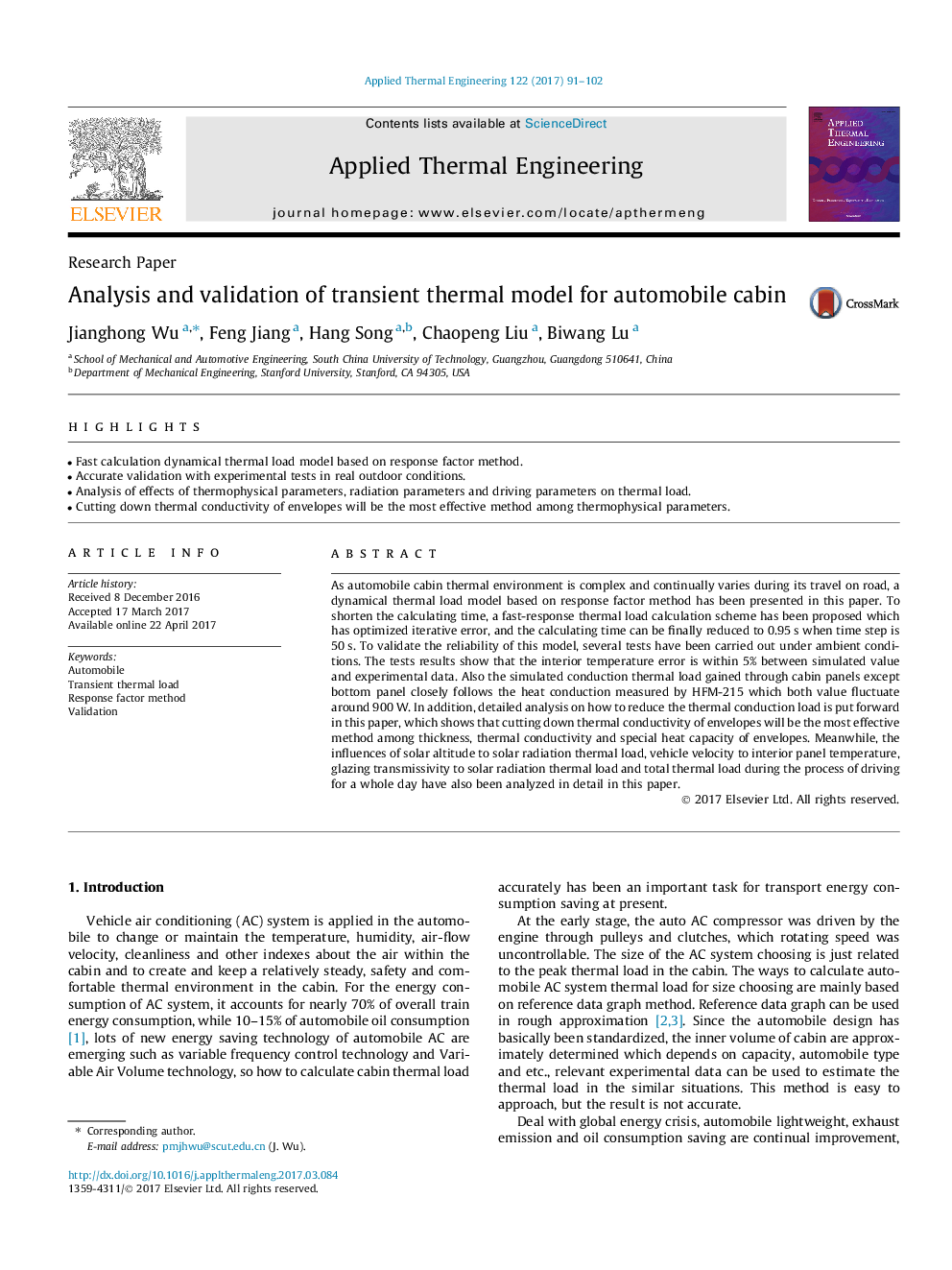| Article ID | Journal | Published Year | Pages | File Type |
|---|---|---|---|---|
| 4990906 | Applied Thermal Engineering | 2017 | 12 Pages |
Abstract
As automobile cabin thermal environment is complex and continually varies during its travel on road, a dynamical thermal load model based on response factor method has been presented in this paper. To shorten the calculating time, a fast-response thermal load calculation scheme has been proposed which has optimized iterative error, and the calculating time can be finally reduced to 0.95Â s when time step is 50Â s. To validate the reliability of this model, several tests have been carried out under ambient conditions. The tests results show that the interior temperature error is within 5% between simulated value and experimental data. Also the simulated conduction thermal load gained through cabin panels except bottom panel closely follows the heat conduction measured by HFM-215 which both value fluctuate around 900Â W. In addition, detailed analysis on how to reduce the thermal conduction load is put forward in this paper, which shows that cutting down thermal conductivity of envelopes will be the most effective method among thickness, thermal conductivity and special heat capacity of envelopes. Meanwhile, the influences of solar altitude to solar radiation thermal load, vehicle velocity to interior panel temperature, glazing transmissivity to solar radiation thermal load and total thermal load during the process of driving for a whole day have also been analyzed in detail in this paper.
Keywords
Related Topics
Physical Sciences and Engineering
Chemical Engineering
Fluid Flow and Transfer Processes
Authors
Jianghong Wu, Feng Jiang, Hang Song, Chaopeng Liu, Biwang Lu,
